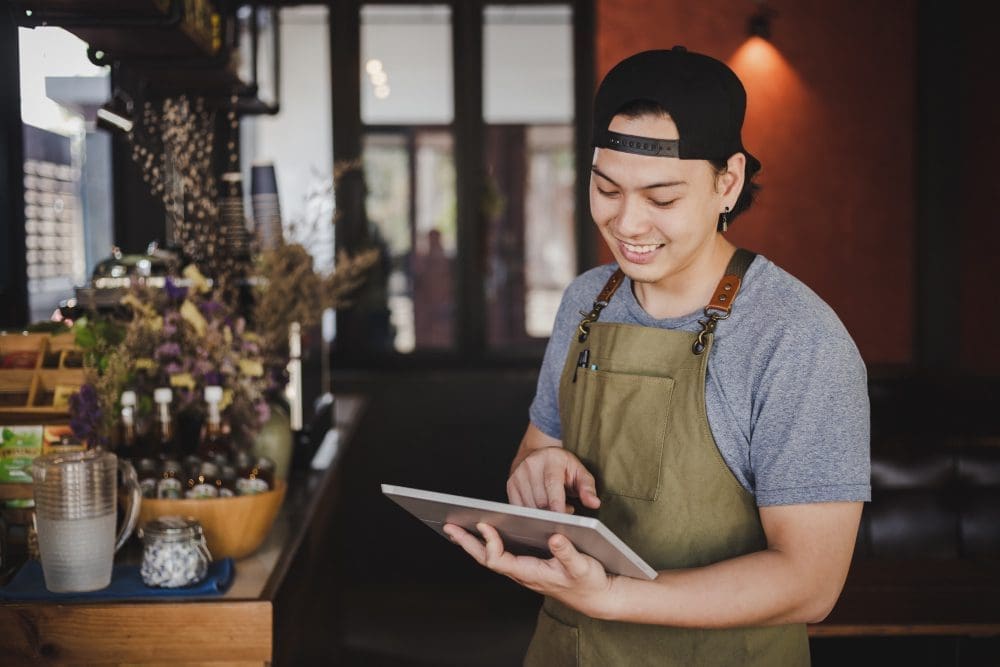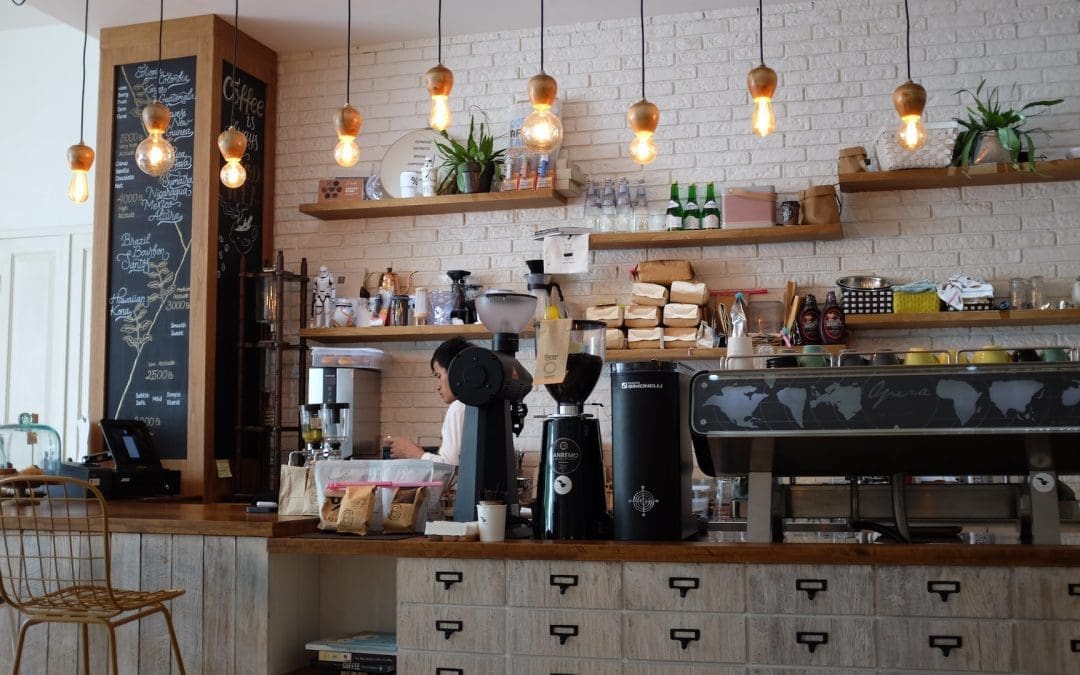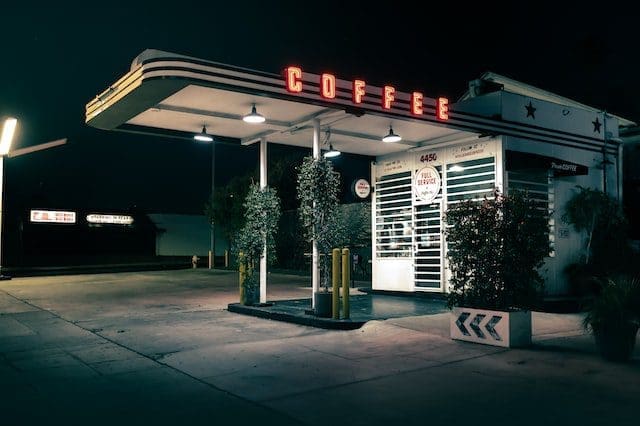No Results Found
The page you requested could not be found. Try refining your search, or use the navigation above to locate the post.

Are you looking to become an expert in specialty coffee? Cafinto Academy is here to help! We are a dedicated educational solution that provides comprehensive courses and trainings on types of coffee, latte art, barista skills, cafe business consultation and more. With our expertise since 2017, we can help reduce your risks and increase success when starting a cafe business. Whether you’re just getting started or have years of experience under your belt, Cafinto Academy has something for everyone looking to learn the secrets of specialty coffee from experts.
The page you requested could not be found. Try refining your search, or use the navigation above to locate the post.
Launch your expertise in coffee and latte art today with Cafinto Academy! Our experts have been perfecting their craft since 2017, so you can rest assured that our knowledge is robust. Through our specialized barista training program, you’ll acquire an edge over the competition while also cutting down on risk as you open a cafe business through tailored consultation services designed for success. Uncover all of specialty coffee’s secrets now by signing up – don’t miss out!
For more information, please browse our website now or contact our sales team +968 7198 8408!
Looking for discounted prices for your business? Request a proposal to receive yours.
When it comes to types of coffee, there is a vast selection of beverages that are available and each one has its own unique flavor profile. From light and delicate roasts to dark and bold ones, there’s something for everyone in this highly varied category. Some types of coffee are even made from different species of beans such as Arabica and Robusta. When selecting types of coffee, it’s important to understand how each one tastes so that you can make the best selection for your cafe business. Cafinto Academy offers courses on types of coffee, ranging from beginner level to advanced certifications, so you can learn everything there is to know about specialty coffee.
Cafinto Academy is here to help you take your specialty coffee knowledge and expertise to the next level. With our trainings, courses, and consultations tailored for success, you can make sure that your cafe business has every opportunity to thrive. Don’t miss out on this chance – sign up
Cafinto Academy is the go-to educational solution for specialty coffee. We offer courses, trainings, and consultations to help you succeed in types of coffee, latte art, barista skills and more. With our expertise since 2017, our experts are here to guide you every step of the way as you open a cafe business. Uncover the secrets of specialty coffee today with Cafinto Academy!
Sign up for our courses to gain an edge over the competition and launch your expertise in types of coffee, latte art, barista skills, and more today!
Start your journey to becoming an expert in types of coffee, latte art, and barista skills with Cafinto Academy. Since 2017, we have been providing comprehensive courses and trainings on specialty coffee that can help reduce the risks when starting a new cafe business and increase success. Whether you’re just getting started or are looking to sharpen up your existing skillset, our experts will guide you every step of the way as you learn all there is to know about types of coffee and specialty beverages.
At Cafinto Academy, we recognize how essential it is to not only acquire fundamental knowledge but also discover the techniques for different kinds of coffee. You will comprehend and understand the taste traits within each type of bean— stretching from light, mild roasts to dark-colored ones with bold flavors —as well as learn their influence on a café business. Moreover, you will be equipped with an understanding in various coffees so that you can make judicious decisions when selecting your own venture!
When it comes to latte art, our experts will teach you advanced techniques that are sure to impress customers. From basic art styles to more intricate designs, you will learn the basics and gain insider tips that can help you take your skills to the next level. You’ll also be given guidance on how to properly steam milk for a smooth texture and perfect temperature every time.
Finally, Cafinto Academy offers consultations tailored for success. Our experts are highly knowledgeable on types of coffee and specialty beverages, allowing you to tap into their knowledge base if needed. We’re here to help you make the most of your cafe business and offer advice on everything from types of coffee to latte art.
Don’t miss out on this opportunity to take your barista skills and cafe business to the next level.
Get answers to common questions about Cafinto academy here:
Cafinto Academy offers a variety of courses ranging from beginner level classes on types of coffee and latte art, to advanced trainings and barista certifications.
We offer tailored consultations to help reduce risks when starting a new cafe business and increase success. Our experts are highly knowledgeable on types of coffee and specialty beverages, allowing you to tap into their knowledge base if needed.
Cafinto Academy has been in business for since 2017, providing comprehensive courses and trainings on specialty coffee to those working with types of coffee, latte art, barista skills, and more.
No prior experience or knowledge is required for our beginner-level classes; however, certain advanced courses may require some prior understanding of the material being taught.
Yes, we offer advanced level barista trainings and barista certifications for those looking to take their skillset to the next level.

What is the cost of opening a coffee shop? Well, coffee shop startup costs are highly variable and will depend on the concept you’re pursuing. For instance, creating a sit-down coffee shop may range from $80,000 to $300,000 (OMR 30,000 to 115,000).
A coffee kiosk or drive-by stand can range anywhere from $50,000 to $100,000 (OMR 19,000 to 38,500). Food trucks cost anywhere from $28,000 to $114,000 (OMR 10,700 to 44,000).
Your startup costs will greatly differ as there are many variations brought on by the location, licensing requirements, region, capacity, concept, menu, marketing approaches, and more.
This article provides a guide on how to recognize and evaluate coffee shop startup costs. Follow our step-by-step process, and by the end, you should have a reasonable estimate.
You’ll get this advice a lot when you’re starting a business. But it’s definitely worth it to write a business plan. You’ll understand what your business needs from staffing requirements to the location. The business plan will be instrumental in attracting partners, investors, and creditors.
Let’s account for seven different cost items that will prominently feature in your budget. Determining the total sum of each factor should provide you with a reasonable estimate.:
For any cafe business to be viable, you need a location with sufficient foot traffic. This refers to the people walking past, around, or through your shop.
Location costs will feature prominently in your budget. And several variables will influence the coffee shop startup costs
Properties in high-density and high-foot-traffic areas fetch higher rental prices. If the store can be conveniently accessed from the street level, it may be expensive as well. Opting for a less busy location away from coffee drinkers may reduce costs. However, please ensure that you can still attract adequate traffic.
When planning for the square footage, you may need 10 to 12 sq. ft (0.9 to 1.1 sq. m) per person for sitting. Each seat will require at least 5 sq. Ft (0.46 sq. m) when allocating space for the kitchen.
A cafe with 40 seats would need about 200 sq. ft (18.58 sq. m) for the kitchen, and 480 sq. Ft (44.5 sq. m) for the dining area. There may be other space requirements, including storage, reception area, booths, or bathrooms.
For cafe startups, you can consider at least 800 sq. ft (74.3 sq. m). This may allow you to accommodate between 40 to 50 seats.
Working with fewer seats may be feasible. But your available space should adequately cater to the number of walk-ins. The number of guests you can sit will determine your profitability and how soon you can break even.
Guests come to a cafe to relax and hang out. So, plan for adequate sitting options.
Starting from a blank slate allows you to translate all your design ideas into reality. However, a new development may cost more to customize to your tastes and to install key utilities such as washrooms, lighting, electrical, and even piping.
If you’re performing all the upgrades, try to negotiate with the landlord for a leasehold improvement. The landlord essentially pays for the improvements by offering rent discounts or an improvement allowance.
The selected location may have extra costs attached to it. For instance, incidentals like utilities, property tax, insurance, maintenance, common area expenses, garbage disposal, etc. You should similarly pay attention to potential rent increases.
Mall locations may have profit-sharing measures in place. They are generally designed to attract new clients who may be hesitant about paying high rental fees for new developments that may fail to attract the right foot traffic.
You can start with a floor plan of the ideal space you need. Figure out the number of seats and how much revenue you can generate. When evaluating potential locations, bring a contractor to determine the renovation costs. Ask about the extra costs of renting the property and about the rent review policy.
When starting your coffee shop, equipment is a big part of the initial investment. The coffee brewing machine will constitute a large chunk of equipment costs. For instance, a simple 1-group machine may start from $2,600 (1000 OMR), and a three-group machine may cost more than $5000 (19200 OMR).
The costs will vary on how professional and sophisticated the equipment is. In addition to coffee brewing machines, there is an entire list of machines and equipment for the cafe kitchen. They all vary depending on your menu items, for instance, you may need toaster ovens for hot meals and freezers for perishable food items.
Start by creating a menu to figure out the required equipment. Then, approach suppliers for estimates on how much everything will cost.
Here are some tips to save on equipment costs:
The POS system is made of POS software and hardware. You’ll pay a one-time and fixed cost for the hardware. It may range from $500 to $1000 (OMR 192 to 384). Software costs may vary, ranging from $60 to $250 (OMR 23 to 96).
You don’t need any intricate equipment. There are many POS systems that are lightweight and perfect for smaller cafes.
Another major cost is designing for the aesthetics of the interior and exterior of your cafe. A location needs to look aesthetically nice with all the right murals, artwork, and furniture.
You must similarly consider the packaging of your product, and mainly the design of your coffee cup. Before spending money on designs, take time to understand your target audience. Consider if people will walk in and take Instagram pictures to post online. Is it something that can go viral and create a buzz?
Every city will have a set of permits and business licenses that you need to acquire as you start your cafe. Additionally, you’ll have to renew your trade license every year, for instance, in Dubai, a cafeteria license ranges from AED 10,000 to AED 30,000.
Acquiring insurance is important too. You should obtain liability insurance for protection against injuries and damage to other people’s property. The cafe and your equipment will similarly need property protection insurance against cases such as damage, theft, fires, and natural disasters.
Staffing is a major cost when opening up a coffee shop and an important budgeting item. Industry standards dictate that labour should not account for more than 25-40% of the revenue. Staffing costs for a cafe maybe even less compared to fine dining locations or restaurants.
There are additional ways of reducing costs without compromising the service quality or understaffing. For instance, you can cross-train staff to handle different tasks, find & retain the right people, invest in automation, and increase efficiency with training.
Marketing is an overlooked step by new cafes. But don’t expect people to automatically stream through your doors the first day you open.
You’ll need to allocate a marketing budget for hiring an agency or an in-house marketer who may work part-time or full-time.
Hiring in-house can offer cost savings in some places. The employee will have a front-row seat when it comes to the day-to-day running of your café. They can easily channel your passion and culture.
A rule of thumb for restaurant businesses is for the marketing budget to be within 3 to 10% of the sale revenue.
If you don’t have a marketing budget when you launch, take advantage of free marketing techniques. You can create a Google My Business account and social media pages.
Deliver the best service to your first customers. They will say nice things about you to their friends or family, allowing you to earn referrals through word of mouth. Your coffee shop can partner with local stores for cross-promotion. For instance, you can partner with a bakery by selling or recommending some of its products.
It’s not easy to say that a coffee shop will cost you this much. While estimates can provide guidance on the cost to expect, it’s essential to break down everything you’ll need with a business plan. You can approach suppliers and receive cost estimates. This makes your budget more accurate and promotes diligent financial planning.
We recognize that the startup process is intricate. At Cafinto, we’re channelling our experience in the coffee industry to offer a paid virtual session that will touch on how to budget correctly and minimize waste.

Is it your dream to start your own cafe/coffee shop? If so, you’re in the right place. We’ll discuss the procedure, from start to finish, of planning and launching a coffee cafe.
Your “Why” is your statement of purpose and existence. It describes why you want to open your cafe and why you’ll suffer through all the hardships to see your mission or dream come to life.
The “Why” is your motivating factor, your mission, and your guiding light. Without realizing your “Why”, it’s quite easy to give up along the way.
The business will demand that you put in more time and work than everyone else. There will be hardships in dealing with licensing, hiring & managing your staff, and finding customers. The “Why” should live beyond you. It’s your mission to humanity.
One of the most overlooked steps in starting a coffee shop is determining who your target audience is. This is the group of people who are most interested in visiting your coffee shop. You can identify this group based on demographics like age, gender, location, and income level.
It’s not enough to simply state that you’re targeting youth under 25 years old as your core market. Go beyond others, by reaching out and speaking to representatives from this group. Ask them about which coffee shops they like, and what they would want to see in a new business.
As an extra step, research your competitors. Read their negative reviews to see what people don’t like. It could become your competitive edge.
The concept is what you want to create. It should be informed by your market research. There are many concepts you can try:

You can add a creative twist to the concept with a coffee shop theme. Your theme may be a topic from art & history, lifestyle choice, emerging issues, design style, etc. Some themes include:
Many factors should go into the selection of a concept and theme. Factor in the level of investment, personality style, target market preferences, and even stress level. For instance, in terms of investment, it’s cheaper to design and launch a grab-and-go cafe compared to a fully dedicated space. The latter requires more staff and comfortable sitting, where people can spend hours of their time.
The menu is the core product of your coffee shop. It’s the reason that guests come in.
Menu design and selection play a huge role in profitability. You can’t assume that you’ll sell coffee only. While a cup of coffee has a gross profit of about 70 to 80%, the price is low. You have to sell a lot of cups to break even. Instead, you can complement coffee with other food items. They can cost more and increase the profitability margin.
Another hint is that the menu must be available year-long. There are certain seasons when demand for certain food items will go down. For instance, during the hot summer months, the consumption of hot coffee drinks may reduce. If that’s all you offer, your revenues may be in the red. Instead, you have cold drinks such as iced coffee.
Your brand is all about how customers feel as they interact with your products and services. It’s the first thing they feel as they step inside your establishment, or even interact with your website online.
You should figure out who you’re as a brand. After this, you create the branding elements that showcase this personality and identity. They will include your logo, custom colours, and even the name.
Many businesses start this process in reverse. They create logos, choose names, and pick colours before knowing who they are as a brand and what they represent.
Running a Cafe shop entails serving guests in-person. So, a location is a must as you start a coffee shop. It’s important to start thinking about the location earlier in the process as it greatly impacts startup costs.
The best location has high foot traffic, great visibility, and prominent access to the street. But the rent may be higher. Even when all these factors align, the place should fit your concept and theme. It should be near your target customers.
Budgeting for startup and ongoing costs is critical if you’re going to run a sustainable business. You also need to remember that customers may not come right away. You’ll need a budget to cater to your rental costs, inventory, and staff during this time. It’s equally important to determine your breakeven point.
Some major costs to think about include:
Your team is the most fundamental component of your business. Without a team, you’ll try to run everything yourself, which is tedious and inhibits growth.
Before posting job ads, define your company culture and policy manual. It specifies the expectations you’ll have for anyone who will work or invest in your business. All stakeholders need to be aligned with your mission and your “Why?”
Launching a coffee business is overwhelming. There is so much to do and figure out. You may feel that the task ahead of you is too difficult because there are many things to know. Luckily, you don’t have to continue feeling this way. Many people have come before you, and made silly mistakes, that in hindsight, they could have avoided.
So, Hi there,
I’m Hammam founder & CEO of Cafinto
Today, I’m taking this opportunity to invite you to have a professional consultation with me about your business idea.
I’ve had the opportunity to operate in the fast-growing coffee industry in Oman as a roastery business. I don’t claim to know everything there is to know. I’m one of the many experts who you should talk to. I would further recommend speaking to baristas, chefs, lawyers, marketers, contractors, etc.
In our business startup consultation, we’ll talk about
– How to optimise your business opportunity and avoid costly mistakes
– Understanding risks and success factors
– How to budget correctly and minimize waste
– How to find the right employees for your business
– and much more
Ready to discuss your idea and receive one-on-one feedback? Book a virtual session with me.
Recent Comments